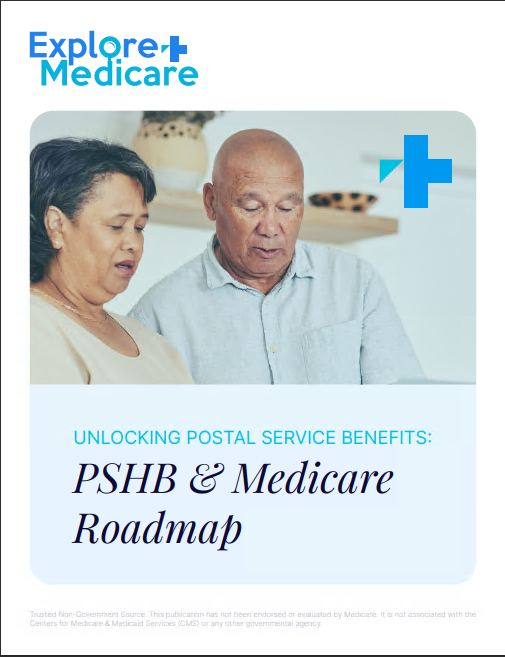Key Takeaways
-
Understanding the details of Medicare Advantage, including premiums, deductibles, and out-of-pocket limits, ensures you choose a plan that aligns closely with your healthcare needs.
-
Regularly reviewing your Annual Notice of Change (ANOC) each fall helps avoid unexpected cost increases or coverage gaps in your Medicare Advantage plan.
What Exactly Is Medicare Advantage?
When exploring Medicare, you’ve probably come across the term “Medicare Advantage” and wondered how it differs from Original Medicare. Medicare Advantage, also known as Medicare Part C, is offered through private insurance companies approved by Medicare. It combines the benefits of Original Medicare (Part A and Part B) and often includes additional benefits like dental, vision, hearing, and prescription drug coverage (Part D).
In simpler terms, Medicare Advantage plans serve as an “all-in-one” alternative to Original Medicare, typically providing extra coverage beyond hospital and medical insurance.
Medicare Advantage vs. Original Medicare: What’s the Difference?
The primary difference between Medicare Advantage and Original Medicare is how you receive and manage your benefits. Original Medicare provides coverage directly from the government, whereas Medicare Advantage plans bundle your benefits through private insurance providers.
Here’s how they compare:
-
Original Medicare:
-
Coverage includes hospital (Part A) and medical insurance (Part B).
-
You pay separate premiums and typically need additional coverage, such as Medicare Part D for prescription drugs and a supplemental policy to fill coverage gaps.
-
-
Medicare Advantage:
-
Combines hospital, medical, and usually prescription coverage into one package.
-
May offer extra perks like vision, dental, hearing, and wellness programs.
-
Uses provider networks, requiring you to visit specific doctors and hospitals to maximize benefits.
-
The Cost Breakdown: Premiums, Deductibles, and Co-pays
When you’re evaluating Medicare Advantage plans, it’s crucial to understand the costs involved, including premiums, deductibles, and co-pays.
Premiums
Medicare Advantage premiums can vary widely depending on the plan, location, and coverage level. Some plans have relatively low monthly premiums, but remember that you must still pay your monthly Medicare Part B premium ($185 per month in 2025).
Understanding Deductibles
A deductible is the amount you pay out-of-pocket each year before your plan starts covering costs. In 2025, deductibles for Medicare Advantage plans typically range from $350 to $2,000 annually. Lower deductibles usually come with higher monthly premiums, while higher deductibles generally accompany lower monthly costs.
The Role of Co-pays
Co-pays are fixed fees you pay each time you receive a covered service, such as visiting a doctor or picking up prescription drugs. Typical co-pays in Medicare Advantage might look like:
-
Primary care visits: $20-$40 per visit
-
Specialist visits: $30-$60 per visit
-
Urgent care: $50-$75 per visit
-
Emergency room visits: $100-$150 per visit
Understanding your expected usage can help you estimate your annual healthcare spending.
Maximum Out-of-Pocket Limits
One major benefit of Medicare Advantage is the maximum out-of-pocket (MOOP) limit. This is the most you’ll pay for covered medical expenses in a year. For 2025, the MOOP for Medicare Advantage plans is $9,350 for in-network services and $14,000 when combining in-network and out-of-network costs.
Once you hit this limit, your Medicare Advantage plan covers 100% of eligible expenses for the remainder of the calendar year.
Prescription Drug Coverage with Medicare Advantage
Most Medicare Advantage plans include prescription drug coverage (Part D). One major improvement in 2025 is the new $2,000 annual cap on out-of-pocket drug costs. After reaching this cap, you pay nothing more for covered medications for the rest of the year.
Coverage Limitations and Network Restrictions
Medicare Advantage plans often come with networks of providers. While some plans allow you to use out-of-network providers at higher costs, others may limit coverage exclusively to network providers.
Types of Medicare Advantage plans include:
-
HMO (Health Maintenance Organization): Requires using network providers, with referrals needed for specialists.
-
PPO (Preferred Provider Organization): Offers more flexibility to see any doctor but at a higher cost if outside the network.
-
PPO (Preferred Provider Organization): Covers both in-network and out-of-network providers, usually with higher out-of-pocket costs when you go outside the network.
Annual Changes and Their Impact
Every year, Medicare Advantage plans can change premiums, deductibles, co-payments, and even the networks of providers. That’s why you should always review your Annual Notice of Change (ANOC), which your plan sends by September 30 each year. This document details changes for the upcoming year, effective starting January 1.
Reviewing your ANOC can prevent surprises and help you decide if your current plan still meets your healthcare needs or if it’s time to switch during the Medicare Open Enrollment Period (October 15 – December 7).
New for 2025: Significant Updates
Medicare is introducing notable improvements in 2025 to help you better manage healthcare costs:
-
Prescription Drug Out-of-Pocket Cap: Your maximum out-of-pocket cost for prescription medications under Medicare Advantage with drug coverage is now capped at $2,000 annually.
-
Monthly Payment Options: The new Medicare Prescription Payment Plan allows you to spread your medication costs evenly throughout the year, providing more predictable monthly expenses.
These updates are designed to make managing healthcare easier, reducing the financial strain if you have high medication needs.
Who Should Consider Medicare Advantage?
Medicare Advantage might be a good choice if:
-
You prefer having a single, bundled plan with additional benefits like dental, vision, and prescription drug coverage.
-
You don’t mind using a provider network or having a primary care physician coordinate your care.
-
You’re comfortable reviewing plan changes annually and making adjustments if necessary.
However, if you frequently travel or prefer complete flexibility to choose any doctor nationwide, Original Medicare paired with supplemental coverage might be more suitable.
When Can You Enroll or Switch Plans?
Your opportunities to join or change Medicare Advantage plans occur during specific enrollment windows:
-
Initial Enrollment Period (IEP): The 7-month window around your 65th birthday (3 months before, the month of, and 3 months after).
-
Annual Enrollment Period (AEP): Runs from October 15 to December 7 each year. You can switch plans or return to Original Medicare. Changes take effect January 1.
-
Medicare Advantage Open Enrollment Period (MA OEP): January 1 to March 31. If already enrolled in Medicare Advantage, you can switch to another Advantage plan or revert to Original Medicare once during this period. Changes become effective the following month.
-
Special Enrollment Period (SEP): Triggered by qualifying events like moving out of your plan’s service area or losing other health coverage.
Avoiding Common Mistakes When Choosing a Plan
When picking a Medicare Advantage plan, avoid these frequent pitfalls:
-
Ignoring Networks: Make sure your doctors and preferred hospitals are in-network.
-
Overlooking Prescription Coverage: Ensure your medications are covered by the plan and understand the costs.
-
Skipping ANOC Reviews: Plans change annually; review your ANOC to avoid unpleasant surprises.
-
Underestimating Costs: Consider not only premiums but also deductibles, co-pays, and maximum out-of-pocket expenses.
Professional Guidance Can Simplify Your Choices
Medicare Advantage is convenient but complex. To choose the plan best suited to your needs, it’s beneficial to speak with a licensed Medicare agent. They can guide you through the nuances of each option, explain potential benefits, and help you avoid costly mistakes.
Ready to Take the Next Step?
Selecting the right Medicare Advantage plan can significantly impact your health coverage, finances, and peace of mind. Reach out to a licensed agent listed on this website to confidently make an informed choice tailored to your unique healthcare needs.









